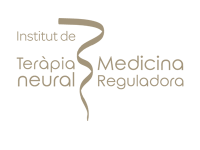28 Days Rehab
13 Minutes
CONTENTS
The psychotherapeutic and medical treatments used to aid recovery from a drug use problem are referred to as drug rehabilitation. When a person’s use of alcohol or drugs has a detrimental impact on their career, school, personal relations, or health, they may be labeled with a Substance Use Disorder (SUD). It’s also marked by a failure to stop using the substance, despite the fact that it’s having detrimental repercussions.

A 28-day residential treatment program for alcohol and drug addiction treatment enables you to live on-site while receiving treatment for your addiction. This period of treatment is common because it provides a solid basis for clients to build on as they begin their recovery.
The services and programs available at 28-day inpatient rehab vary based on the facility and the needs of the individual. For many people, treatment will begin with a period of medically monitored detox to enable them to safely manage the acute symptoms of substance withdrawal.
Because detox alone is rarely enough to help a person sustain long-term sobriety, it’s generally good to pursue further treatment options. This might be a 28-day program, or even longer if necessary.
You may join both group and individual treatment sessions over the period of 28 days, as well as 12-step meetings, which provide encouragement from others in recovery. These meetings and treatment sessions let you engage with others who are dealing with the same addiction issues as you, making you feel less alone and more supported.
Detoxification. Before beginning the therapeutic treatment, some individuals will need to undergo medically monitored detoxification (detox). A detox may be provided by the treatment center or may be required prior to admission to the program.
When a person quits taking drugs, the body attempts to cleanse itself of poisons, which can cause withdrawal symptoms in varying degrees. In certain cases, withdrawal symptoms are mild enough that medical detox is not required. However, symptoms of withdrawal can be extreme and even life-threatening in some situations, necessitating medically supervised detox.
Medical staff regularly observes the patient while administering drugs, fluids, and other measures to manage physical and mental withdrawal effects and guarantee patient safety during the detox process.
The usual length of time spent in clinical detox is 7-10 days. The time it takes to purge the body of an addictive substance, on the other hand, varies depending on the drug, the average dosage, frequency, and the length of time it has been used.
Detox is frequently the first stage of treatment, but it does not tackle the behavioral adjustments required for long-term recovery. It’s critical to follow up with outpatient or residential treatment after detox.
Treatment in a residential facility. Residential treatment centers provide live-in rehabilitation programs that can have an average rehab stay of 30 to 90 days. Personal, group, and family counseling, medication-assisted therapy, 12-step or other sobriety support groups, and an aftercare program are common components of the program. Inpatient rehab provides medical and emotional assistance 24 hours a day, seven days a week.
Clients are helped to understand what has prompted their past addictive behavior and how to control those trigger points in the future through a variety of therapy modalities. Clients work on communication skills, impulsive behavior, and stress management strategies as well.
While many rehab centers provide a wide range of addiction treatment options, some concentrate on specific chemical addictions, as well as a specific age group or gender.
Clients have the time and help they need to develop long-term behavioral changes because residential programs often last 90 days or longer. As a result, research has indicated that residential recovery programs have the best long-term success rate.
Treatment is provided on an outpatient basis. Outpatient therapy is less restricted than residential treatment, allowing a person to live at home, go to work or school, and continue with their normal duties. For someone with a mild substance use disease and a good support system, an outpatient treatment program may be the primary level of care, or it may be used as a follow-up program following residential rehab.
Clients in outpatient programs often undergo group and individual therapy for a few hours a week to several hours a day, and treatment can last several months.
To achieve positive outcomes, the National Institute on Drug Abuse (NIDA) recommends a treatment period of at least 90 days for both inpatient and outpatient programs. Treatment programs lasting more than 90 days, according to the NIDA, had the highest success rates.
Rehab in long-term care. Extended care in the shape of a sober living institution or halfway home may be a viable option for those with severe substance use disorder, those who persistently relapse, or those who lack a strong support system.
Sober living programs give residents an organized and supportive environment in which to improve the skills necessary for long-term recovery. The resident learns to switch back into an autonomous living situation while participating in these programs, which provide an affordable living choice with peer and staff support.
A 28 rehab center is a prominent type of addiction recovery program that provides persons recuperating from alcohol or drugs with a more intensive degree of care. This form of treatment program may involve the following, based on a person’s needs and quality of care:
- A substance detoxification period
- Group and individual therapy
- 12-step program facilitation.
- Medication management.
- Planning for aftercare.
28-day programs can help individuals overcome their resistance to addiction therapy, detoxification from alcohol and drugs, and learn how to stay sober in everyday life.
People with more serious addictions or who have relapsed may not get enough therapy in these programs, so it’s vital to think about your particular requirements while selecting a 28-day drug rehab.
To begin, you need to know that a 28-day period is divided into five blocks.
1. Send Admission Request – Day 0
2. Define Treatment Goals – Day 0
3. Comprehensive And Assessment Detox – Week 1
4. Ongoing Physical And Mental Therapy – Week 1-4
5. Family Therapy – Week 4
To begin, you need to know that a 28-day period is divided into five blocks. This length of time is preferred by rehab centers since their primary programs are designed to last this long. Clients are far more prone to relapse if they are not exposed to roughly 28 days of therapy sessions, according to experience. Cognitive therapy or psychotherapy is the most common treatment method. By revisiting traumatic experiences in individual therapy sessions, these treatment strategies help you neutralize them.
Behavioral treatment and relapse prevention courses are also available at several 8 weeks rehabs. To be effective, these therapies necessitate a lot of practice time. This is unlikely to be enough time for these therapies and training strategies to succeed if you only stay in rehab for 28 days.
The 28-day recommendation, in our opinion, is most appropriate for those of you who have never received any type of rehab treatment before. In this instance, you’ll most likely need a total of 28 days to fully recover.
What happens on the 28th day? Is it true that the brain rewires? Do your cravings go away? Is the battle suddenly over after 4 weeks of treatment?
No, no, and no again. There is no simple answer to this question. Scientists have yet to find if 28 days is the ideal length for recovery.
On day 28, the insurance company stops paying. That’s all there is to it for now. In most cases, insurance companies will only cover up to 28 days of inpatient care. So that’s how long it goes on.
This trend began with military rehabilitation programs. The first addiction program was formed in the United States Air Force in the 1970s. How did they come up with the treatment duration? Military troops could only be absent from duty for 4 weeks before being relocated. The 28-day courses allowed Air Force men and women to receive therapy and return to their responsibilities without being reassigned.
Other programs soon followed suit, and insurance companies eventually adopted this norm as well. The practice hasn’t changed in decades.
Insurance firms are still trapped in the 1970s, despite the data. Carriers rarely provide complete coverage for longer-term treatment. And recovery might be rather costly.
Even traditional 28-day inpatient programs rarely cost less than $10,000. Some, like as ones used by celebrities, can be as expensive as $33,000. However, because these programs occur within the 30-day insurance cut-off, they may be covered. The overall expense for people who decide for the more successful 90-day programs often runs from $12,000 to $60,000, and they may or may not be reimbursed by insurance or programs like Medicare and Medicaid.
As more evidence develops against the 28-day paradigm, insurance firms are expected to embrace the new trend. Making longer programs more affordable could have a significant influence on the lives of millions of people. That is truly magical.
Knowing what to expect from a residential drug rehab program might help you pick one that is most suited to your or a loved one’s requirements. Consider the following factors when seeking treatment:
The cost of treatment. The cost of a 28-day program varies depending on a number of factors, including the length of the program and the services offered. Thirty-day programs are typically less expensive than 60-day or 90-day programs, and they are more likely to be covered by health insurance. However, verify your insurance policy to determine what amount of treatment is covered.
Planning for aftercare. Once you leave the institution, the treatment staff will evaluate your treatment and assist you in developing a structured strategy. Typically, our aftercare programs are a part of 8-week rehab. Aftercare programs can provide you with ongoing support and encouragement, as well as perhaps prevent relapse. 12-step meetings, regular therapy sessions, and sober living situations are examples of aftercare programs.
Methods of treatment. Consider the facility’s methods of treatment and whether or not they can handle all aspects of your or your loved one’s addiction. Because addiction can be caused by a multitude of circumstances, it’s beneficial if the program tackles both the obvious cause of the addiction and any additional difficulties you’re dealing with, such as medical concerns, co-occurring mental health conditions, familial, or interpersonal connection issues.
Treatment for co-occurring disorders. Co-occurring disorders, often known as dual diagnoses, are very frequent. As per the Substance Abuse and Mental Health Services Administration’s 2015 National Survey on Drug Use and Health, 8.1 million (41.2 percent) of the 19.6 million individuals who had a substance use disorder in the previous year also had a mental illness.
Experience and credentials of the personnel. Checking the credentials, licensure, and certifications of the personnel and facility should also be part of your search for trustworthy drug rehab near you. This could reveal information about how the facility is run and held accountable. The credentials and certifications of treatment professionals, the staff-to-patient ratio, the institution’s credentials, and whether the facility has prescribing or treating physicians are all items to check for.
Location. For many people and their families, location is a major issue. For some people, going to a place where there are no distractions is great. On the other hand, you may prefer to remain near to home in order to maintain contact with friends and family, whose support can aid in your rehabilitation.
Detoxification is frequently the first step of a 28-day alcohol rehab program in a residential treatment clinic. Detoxification, a medical treatment aimed at reducing the effects of alcohol withdrawal on the body, can last up to 7 days. Only 21 days are left for examination and rigorous counseling. As a result, the counseling offered in a well-managed comprehensive alcohol treatment program aims to help patients realize the specific causes of their alcoholic situations and devise methods of dealing with issues that may lead to a restart of alcohol consumption. Patients may get initial cognitive therapy or behavior modification, with the goal of continuing to receive similar therapy from outpatient alcohol counselors once the residential short-term alcohol rehab program is completed.
Please contact us right away if you or a loved one would want to learn more about how 28-day alcohol rehabilitation programs can be a terrific start on the road to recovery.

Rebuilding their families, careers and personal lives

Feel as if they are in a 5-star hotel

Rebuild their identity, and nourish their emotional self through education

Reassembling a happy, healthy life

Useful Wisdom

Peace of mind and an open heart
The purpose of residential short-term drug and alcohol treatment is to assist patients in mapping out a path to recovery that they can follow on their own while rebuilding their families, careers, and personal lives. Alcohol recovery programs for 28 days are sometimes given in luxurious settings that would be cost-prohibitive for lengthier stays. These clinics provide not just cutting-edge short-term drug rehab but also exercise and sports training, art and music therapy, relaxation and meditation sessions, and other programs that assist recovering alcoholics in finding healthy ways to cope with stress.
Patients will feel as if they are in a 5-star resort rather than a health facility, especially because the period of therapy is equal to that of a long vacation. As a result, they are calm rather than uptight. The combined effect of top-quality treatment and a relaxing environment attracts the best short-term alcohol and drug rehab specialists, and the combination tends to leave patients recharged and ready to fight any temptations to return to alcohol that may arise after they actually finish their 28-day alcohol and drug rehab programs.
The 28-day treatment model is likely the most well-known of the several methods for alcohol and drug rehab programs. It was focused initially on alcohol abuse and the Alcoholics Anonymous 12-step program. Other substance abuse concerns are now being treated with the 28-day treatment. Substance addiction is treated as a biological disorder that is aggravated by psychosocial and environmental variables in this multi-tiered approach. Those who suffer from addictive behavior suffer from a persistent medical condition, and treatment alone will not solve the problem. By examining all facets of a person’s addiction, the 28-day therapy plan is an effective prescription for battling sickness.
Rather than concentrating on one part of the person, the inpatient method considers and addresses the person as a whole mind-body-spirit. The 28-day treatment starts with the detoxification of the body, the stabilization of a patient’s physiological problems, and the relief of any physical withdrawal symptoms. Medication may be prescribed by medical practitioners to help in recuperation. Regardless, the staff is on hand to make the patient’s detoxification procedure go as smoothly as possible. Individuals recovering from addiction can completely invest in improving their mental, emotional, and spiritual selves once the biological difficulties have been treated.
Patients gain knowledge about addiction, rebuild their identities, and nourish their emotional selves through education, group and individual counseling, artistic and recreational activities, and personal contemplation. They are given tools to identify and examine the psychosocial and environmental causes of their substance dependency, allowing them to spot patterns of poor behavior and decisions that would otherwise obstruct their recovery. Those in recovery learn new ways of being in the world and the wonderful possibilities it provides in this way.
The 28-day treatment plan aids patients in reassembling a healthy, happy life by addressing all of the factors that contribute to their identity. People that go through this procedure learn that their chemical dependency is the result of their neglecting a particular portion of themselves. Patients emerge from recovery as a whole person, connected to every part of themselves and the world at large, after contemplating each facet of themself. People can start a new chapter of their lives based on sobriety, excellent health, useful wisdom, peace of mind, and an open heart through the 28-day program.
Is A 28-Day Rehab Program Better Than A 60-Day Program?
Health professionals will analyze all relevant criteria during the initial evaluation in order to make a recommendation about treatment duration and intensity.
Some people can begin treatment in a 28-day inpatient addiction rehabilitation program and make sufficient progress to move to outpatient care, while others will need to stay hospitalized for another 30-days or more.
Who Should Participate In The 28-Day Program?
Individuals with a mild substance abuse problem may be good candidates for a 28-day recovery program followed by individualized aftercare. Short-term treatment is more probable to be less expensive than long-term therapy, making it a viable alternative even for those with limited financial resources. Individuals with a serious drug use disorder or a co-occurring disorder, on the other hand, may require long-term treatment.
HOW THE BALANCE CAN HELP WITH Rehab
The Balance RehabClinic is a leading provider of luxury addiction and mental health treatment for affluent individuals and their families, offering a blend of innovative science and holistic methods with unparalleled individualised care.
A UNIQUE METHOD TREATING Rehab
a successful and proven concept focusing on underlying causesOur program consists of treating only one client at a time individually designed to help you with all the problematic aspects of your life. All individual treatment sessions will be held at your private residence.
more infoYour program is designed based on your personal needs. The team will exchange daily information and adjust the schedule as we go. Our therapists will work with you treating the root causes and not just the symptoms and goes beyong your stay to ensure lasting success.
more infoOur biochemical imbalance can be affected by diet and stressful life events, but it often goes back to genetics and epigenetics. We do specific biochemical laboratory testing to determine an individual’s biochemical imbalance. Combining the results of the lab tests with anamnestic information and clinical tests, we prescribe an individualized and compounded vitamin, mineral, nutrient protocol to help recover from various disease states.
more infoOur experts combine the best from psychological treatment, holistic medicine to support you individually and providing complementary therapies all coordinated from one source working complementing each other integrative.
more infoUsing latest cutting-edge technology-based therapies such as Neurofeedback, tDCS, and SSP, we can track the biological patterns of your body, giving us valuable insight into your health and well-being as well support your brain and body performance and recovery with neuromodulation.
more infoComplex trauma is often a key factor to distress mental and physical state. The Balance provides a safe space along integrated trauma treatment methods to enable healing.
more infoRehab TREATMENT LASTING APPROACH
0 Before
Send Admission Request
0 Before
Define Treatment Goals
1 week
Assessments & Detox
1-4 week
Psychological & Holistic Therapy
4 week
Family Therapy
5-8 week
Aftercare
12+ week
Refresher Visit
Rehab Insights
latest news & research on Rehab
The Impact of Environment on Recovery: A Look Inside The Balance Clinic's Setting
There is a significant, and well-studied link between weather and mood. An individual extremely sensitive to changes in weather may develop SAD - seasonal affective disorder
read more
Treatment Centers for Eating Disorders
The process of treating an eating disorder at an ED rehab can vary depending on several factors, like the facility one chooses, the nature and severity of eating disorders
read more
Best Luxury Rehab Centers
The best luxury rehab centers are known for providing various amenities that provide a comfortable and enjoyable treatment experience
read more
































































